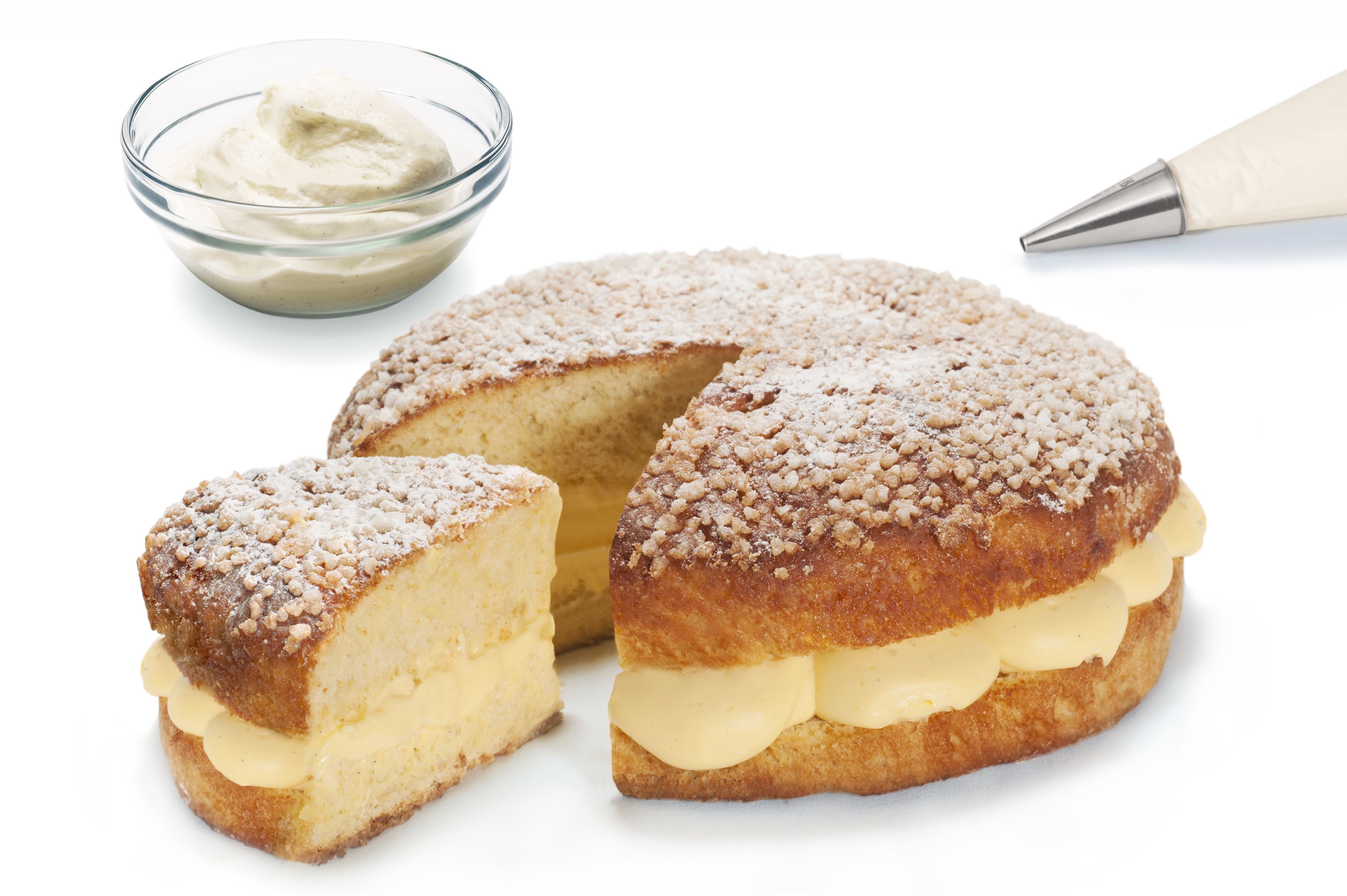Recipe Description
Cream is an essential ingredient in many classic European dishes giving them a unique velvety, rich taste. It is also incredibly versatile and will enhance any recipe from a starter through to an incredible dessert, and adds a wonderfully soft consistency to sauces.
There are several types of cream distinguished by conservation treatments, fat content and consistency. The ones most commonly used in cooking include:
- Pasteurised fresh single / double cream,
- Sterilised liquid cream
- Low-fat cream
- UHT cream
- Whipped cream
- Chantilly cream
- Sour cream
There are also specialty creams made following a strict manufacturing criteria in specific regions under the exclusive Designated Place of Origin label, for example creams made in the French regions of Isigny and Bresse.
European cream is manufactured under stringent conditions using only the finest quality milk and following exact rations of fat to water and non-fat elements (protein, lactose, minerals) depending on the type of cream.
To celebrate and showcase European cream, the CNIEL (Centre National Interprofessionel de l’Economie Laitière, France), a privately run organisation promoting dairy products and the European Union have launched the ‘Cream of Europe’ campaign, which is aimed at promoting the use of European dairy-based cream.
This recipe, by Chef Philippe Grouiller, is part of the campaign.

Recipe Ingredient
- 10g organic yeast
- 135.5g whole eggs
- 250g flour
- 5g salt
- 25g caster sugar
- 12.5g whole milk
- 5g glucose crystal
- For finishing
- 500g prepared base cream glaze (beaten egg yolk with a little water)
- Nib sugar or pearl sugar
- Custard (Makes 500g)
- 125g milk
- 125g cream
- 80g egg yolks
- 50g caster sugar
- 12.5g constarch
- 12.5g flour
- Buttercream (Makes 225g)
- 22.5g whole eggs
- 90g sugar
- 22.5g water
- 90g butter
Instructions
- Work the butter to soften it and keep it at room temperature. Dissolve the yeast in a little warm water. Break the eggs into a bowl. Sift the flour on your work surface and create a well in the middle. Pour the salt and sugar in the centre, add the eggs, milk and glucose, and finally the dissolved yeast. Work your fingertips in a circular motion to mix the ingredients while pulling toward the centre.
- When the dough forms a ball, knead the dough firmly, then beat with both hands so that it takes shape. To do this, lift up the dough and let if fall on the work station. Continue until the dough easily comes off your fingers and the work station. Add the worked butter and knead again until the dough is smooth. Shape into a ball, dust with flour, cover with a cloth and let it grow under a cloth for 45 minutes. Spread the brioche dough to 7 mm thick and use a 21 cm round cookie cutter to cut out the brioche. Preheat the oven to 170°C / 340°F for 10 minutes. During that time, allow the dough to rise. Brush the rounds of brioche dough with beaten egg, sprinkle with granulated sugar and bake for 15 minutes in the oven.
- Bring the milk and cream to a boil.
- Meanwhile, whisk the egg yolks, sugar, cornstarch and flour until the mixture whitens. Pour a small amount of the hot milk into this mixture to temper it, whisking well, then pour it into the saucepan containing the remaining milk and cook over low to medium heat, stirring with a whisk until it reaches a light boil: the cream should thicken. Cook for another few minutes, stirring well.
- Pour the cream into a container, cover with plastic wrap to prevent the formation of a crust, let cool and refrigerate.
- Use a sugar thermometer to get the precise temperature of the sugar when cooking. In a mixer fitted with the whisking attachment, break the eggs and beat slightly.
- In a saucepan, combine the sugar and water. Cook until the temperature reaches 120°C / 248°F. Be careful not to exceed this temperature!
- Gradually pour the syrup over the eggs while whisking the batter until a light zabaione mousse forms. Let cool to 40°C/104°F while continuing to beat the mixture.
- Stir in small pieces of the butter at a time, then run the mixer until a smooth cream develops.
- When the two creams are cooled, mix together gently with a rubber spatula at a ratio of about two thirds to one third, or 150 g of buttercream to 400 g of custard for a uniform cream base. Keep cool, preferably in a pastry bag fitted with a plain tip.
- Allow the brioche to cool then slice in half horizontally. Pipe the bottom half with cream, then cover with the top half. Refrigerate for 1 hour before serving.











